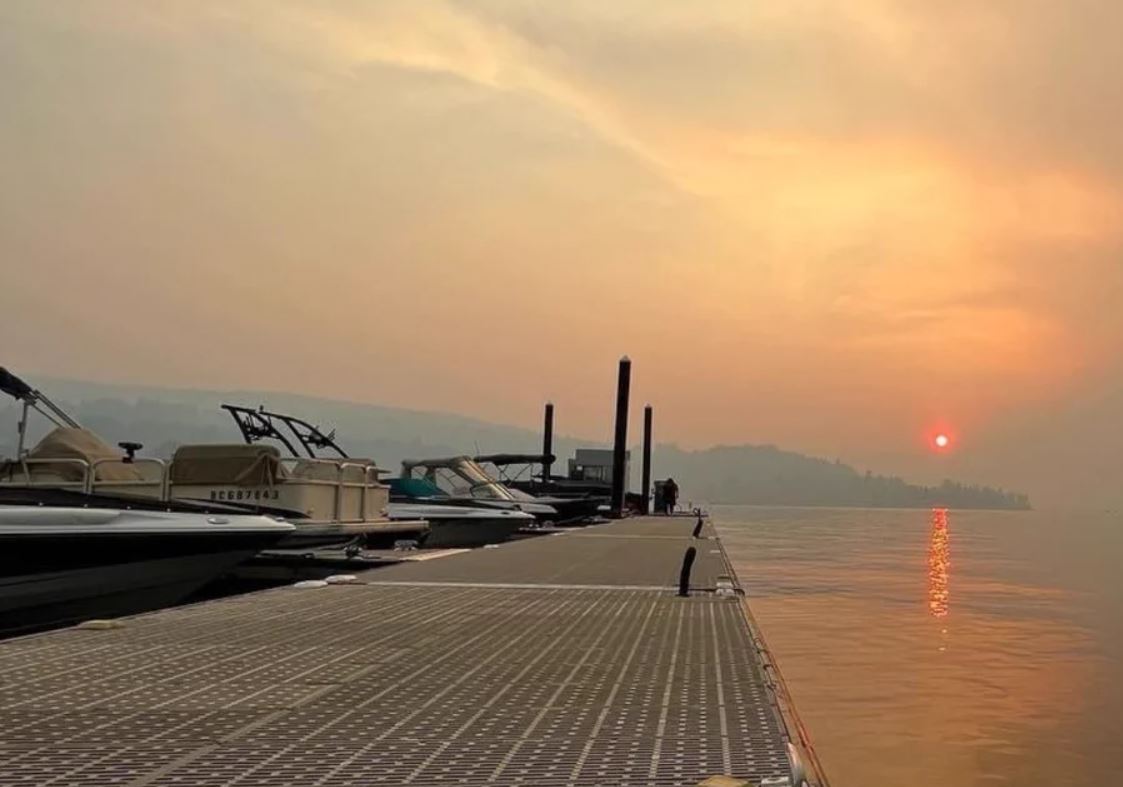Wildfire evacuations are being done by boat for a community along Shuswap Lake in B.C.’s Interior.

According to the Columbia Shuswap Regional District, the Scotch Creek bridge is closed due to Rank 5 fire behaviour on either side of the bridge.

The Lower East Adams Lake wildfire is estimated at 10,004 hectares and has generated several evacuation alerts and orders — including orders for the two small communities of Scotch Creek and Lee Creek on Friday afternoon.
The bridge closure has resulted in the shutdown of all road access for the small community, with the regional district adding that firefighters have had to back off due to fire behaviour and that sprinklers are on.
The regional district says search-and-rescue boats will be available at the wharf (4248 Ashe Rd.) and will transport people across the lake, where buses will transport them to an evacuation reception centre in Kamloops.
The province’s fire ranking goes from 1 (smouldering ground fire) to 6 (blow-up or conflagration; aggressive fire behaviour).
Earlier Friday, the BC Wildfire Service says it doesn’t send crews into Rank 5 or 6 scenarios.

“When there is a Rank 6 fire, and in even in Rank 5, we don’t use initial attack. We don’t put crews in front of it,” said fire information officer Shaelee Stears.“That creates an extremely dangerous situation and poses very significant safety hazards.
“When those conditions are (present), that’s when we utilize parallel or indirect attack methods and take the fire suppression farther away from the head of the fire.”
The CSRD said it will have an update soon.
- As Canada’s tax deadline nears, what happens if you don’t file your return?
- Planning a summer trip to Quebec’s Îles-de-la-Madeleine? You’ll have to pay up.
- Bird flu concerns over U.S. dairy cattle growing. Here’s what to know
- Investing tax refunds is low priority for Canadians amid high cost of living: poll




Comments